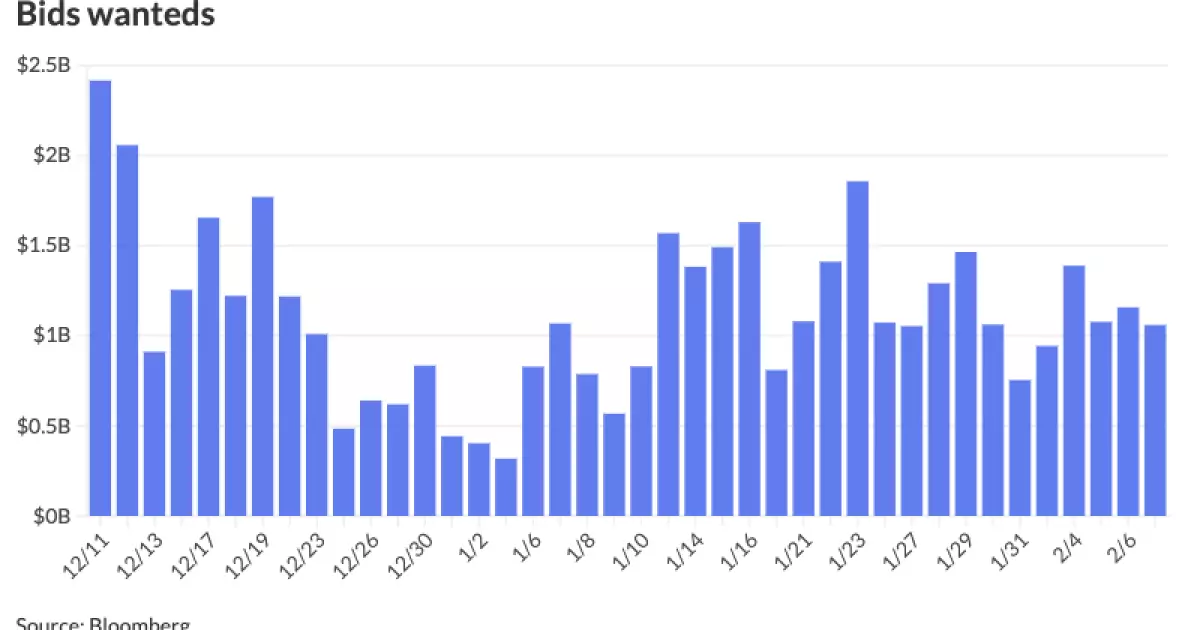Analyzing the Current State of the Municipal Bond Market: Trends and Outlook

The municipal bond market has shown promising signs at the start of the year, reflecting a gradual recovery from a turbulent December. As investors navigate changing landscapes in economic indicators, recent analysis reveals an intriguing interplay between municipal securities, U.S. Treasuries, and market behaviors that can shape future investment strategies.
As we begin a new year, municipal bonds have embraced a rally that has piqued the interest of investors. Notably, the asset class has experienced a gain of 0.43% in early January, culminating in a year-to-date increase of 0.94%. This rebound comes in stark contrast to December’s dismal performance, which recorded a loss of 1.46%. According to Jason Wong, Vice President of Municipals at AmeriVet Securities, this positive trajectory signifies a recovery phase within the municipal market as participants shake off previous volatility.
Moreover, Daryl Clements, a municipal portfolio manager at AllianceBernstein, highlighted how recent market dynamics have influenced investor sentiment. The initial lack of conviction among real money accounts, attributed to significant economic fluctuations, has gradually shifted. Strategists at Birch Creek noted that as the week unfolded, a combination of a manageable new issue calendar and robust inflows motivated investors to reignite their purchasing activities.
The uptick in buying and selling activity is a strong indicator of improving market conditions. Reports indicated a 26% increase in dealer sales and a 20% rise in bid wanted listings, underscoring a pronounced shift in investor behavior. Such revitalization indicates a growing confidence among participants, re-engaging with the asset class amid seasonally strong reinvestment rates.
Investment appetite has notably concentrated on munis, driven largely by the attractive yields they currently offer compared to U.S. Treasuries. Observations reveal that ratios across various maturities have begun to favor municipal bonds, indicating a market structure that increasingly favors these securities. Wong points out that the two- to 10-year municipal-to-U.S. Treasury ratios have tightened significantly, while the long-end has seen a relative “cheapen” effect, enhancing its allure as investors brace for potential lower interest rates in the near future.
The performance of U.S. Treasuries has shown mixed signals, which further adds dimensions to the municipal bond landscape. Recent data has revealed narrow fluctuations in Treasury yields, with the two-year UST yielding 4.275%, creating a complex backdrop for those comparing risks and returns in municipal bonds. Such dynamics prompt investor evaluations regarding the balance of yield against potential shifts in economic policy, taxation, and fiscal health.
Despite this volatility, municipal bonds exhibited resilience. Comparisons suggest that the relative stability and incremental recovery within the municipal space can provide a more favorable risk-reward ratio for cautious investors. The substantial inflows into long-duration mutual funds underscore an unquenched thirst for yield, revealing that many are willing to embrace the long-end of the munis curve as an attractive alternative amid ongoing economic uncertainty.
Looking forward, the municipal market anticipates significant issuances in the upcoming week, with prominent offerings from major authorities seeking to raise capital. Notably, the New York City Transitional Finance Authority plans to price $1.659 billion in bonds, a move mirrored by other states proposing sizable bonds as well. The appetite for these bonds, combined with strong demand, sets the stage for sustained activity in the municipal bond market.
As various states roll out their offerings, interest in high-yield and long-duration strategies remains robust. This focus highlights the steepness of the municipal yield curve accompanied by decreasing credit spreads, positioning the asset class favorably against the broader market.
The municipal bond market appears to be entering a new phase characterized by renewed investor interest and solidifying gains. The contrasts with last December’s underperformance serve as a reminder of the necessity for adaptive strategies amidst evolving economic landscapes. Therefore, as we monitor upcoming issuances and further market developments, both seasoned investors and newcomers should continue to assess risk scenarios while strategically leveraging opportunities within the municipal space. The current momentum suggests a cautiously optimistic outlook for municipal bonds, solidified by tangible demand and potential for steady inflows throughout the year.





